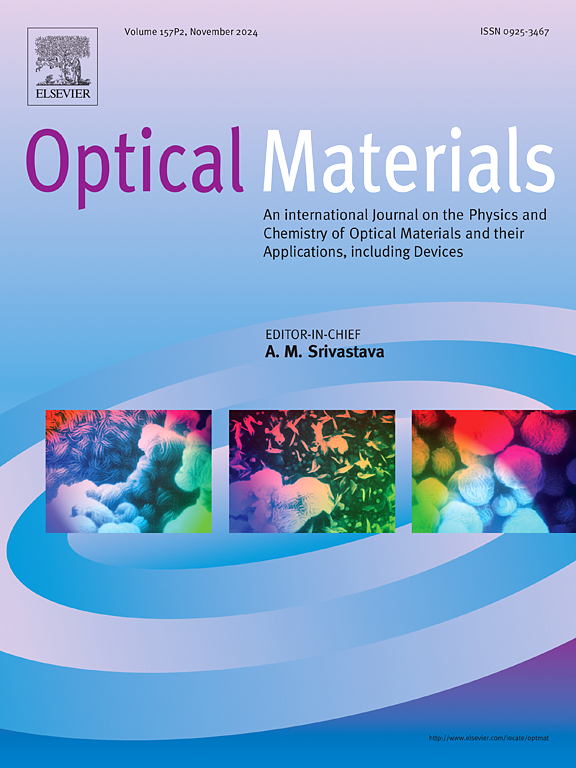Photodegradation based on ZnIn2S4/ZnTiO3 heterojunction for the removal of tetracycline and nitenpyram from wastewater
IF 4.2
3区 材料科学
Q2 MATERIALS SCIENCE, MULTIDISCIPLINARY
引用次数: 0
Abstract
Background
Despite the numerous reports on the application of perovskite oxide ZnTiO3 in photodegradation, literature specifically addressing the degradation of tetracycline (TC) remains sparse. Furthermore, there is significant variability in the reported photodegradation rates across different studies. Therefore, it is meaningful to re-evaluate and enhance the efficacy of ZnTiO3 for the photodegradation of TC.
Motivation
ZnTiO3 and ZnIn2S4 are both n-type semiconductor materials. The valence band (VB) and conduction band (CB) levels of ZnIn2S4 are 1.64 V and −0.68 V, respectively, which align well with ZnTiO3. So our objective is to construct a ZnIn2S4/ZnTiO3 heterojunction to synergistically enhance the photocatalytic activity of ZnTiO3 through improved charge separation.
Methods
In this study, ZnIn2S4/ZnTiO3 were synthesized via a hydrothermal method using ZnTiO3, ZnCl2, InCl3·4H2O and Thioacetamide as raw materials, and subjected to a water bath reaction at 80 °C for 2 h. The structure and morphology were analyzed through XRD, SEM, XPS and other characterization techniques.
Results and conclusions
The optimum 25 % ZnIn2S4/ZnTiO3 catalyst demonstrates superior photocatalytic degradation towards TC and nitenpyram, achieving removal rates of 82 % and 67 % within 210 min, significantly surpassing the efficiency of pure ZnTiO3. Free radical scavenging experiments indicate that the order of active species contributing to the photodegradation of TC and nitenpyram is ·O2− > h+ > ·OH. These findings highlight the potential application of ZnIn2S4/ZnTiO3 in the photocatalytic degradation of specific antibiotics and pesticides in wastewater.
ZnIn2S4/ZnTiO3异质结光降解废水中四环素和硝基吡喃的研究
尽管有许多关于钙钛矿氧化物ZnTiO3在光降解中的应用的报道,但专门针对四环素(TC)降解的文献仍然很少。此外,不同研究报告的光降解率存在显著差异。因此,重新评价和提高ZnTiO3光降解TC的效果具有重要意义。zntio3和ZnIn2S4都是n型半导体材料。ZnIn2S4的价带能级(VB)和导带能级(CB)分别为1.64 V和- 0.68 V,与ZnTiO3排列良好。因此,我们的目标是构建一个ZnIn2S4/ZnTiO3异质结,通过改善电荷分离来协同增强ZnTiO3的光催化活性。方法本研究以ZnTiO3、ZnCl2、InCl3·4H2O和硫乙酰胺为原料,采用水热法合成ZnIn2S4/ZnTiO3,在80℃下进行水浴反应2 h,通过XRD、SEM、XPS等表征技术对其结构和形貌进行分析。结果与结论25% ZnIn2S4/ZnTiO3催化剂对TC和nitenpyram具有良好的光催化降解效果,在210 min内去除率分别为82%和67%,明显优于纯ZnTiO3。自由基清除实验表明,参与TC和nitenpyram光降解的活性物质的顺序为:·O2−>;h +比;·哦。这些发现突出了ZnIn2S4/ZnTiO3在光催化降解废水中特定抗生素和农药方面的潜在应用。
本文章由计算机程序翻译,如有差异,请以英文原文为准。
求助全文
约1分钟内获得全文
求助全文
来源期刊

Optical Materials
工程技术-材料科学:综合
CiteScore
6.60
自引率
12.80%
发文量
1265
审稿时长
38 days
期刊介绍:
Optical Materials has an open access mirror journal Optical Materials: X, sharing the same aims and scope, editorial team, submission system and rigorous peer review.
The purpose of Optical Materials is to provide a means of communication and technology transfer between researchers who are interested in materials for potential device applications. The journal publishes original papers and review articles on the design, synthesis, characterisation and applications of optical materials.
OPTICAL MATERIALS focuses on:
• Optical Properties of Material Systems;
• The Materials Aspects of Optical Phenomena;
• The Materials Aspects of Devices and Applications.
Authors can submit separate research elements describing their data to Data in Brief and methods to Methods X.
 求助内容:
求助内容: 应助结果提醒方式:
应助结果提醒方式:


